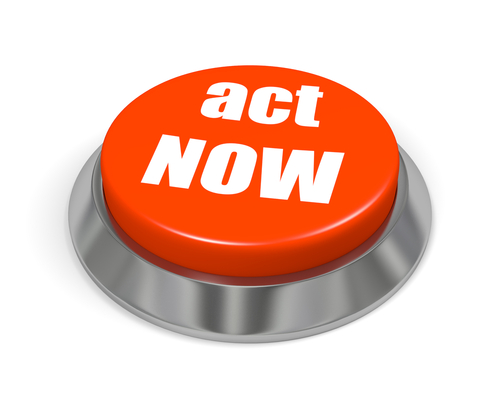
Every nonprofit organization should have a call to action. That is, they have a place where they tell people what they want them to do. It’s an objective to complete, and provides users with focus, a measurable goal, and direction.
To create an effective call to action, there must first be a groundwork set up. A specific must be identified and the organization must offer up a solution. There should be a benefit involved for those that choose to join with the organization. What will they get out of it? If an organization has the resources, it might offer small incentives, such as a bumper sticker or a button with donations.
Giving users options for a few distinct actions will also provide direction. It’s a good idea for organizations to provide some starting points to guide the user around the site or cause. Common actions might include donating money, becoming a member of the organization, or volunteering for an event.
Calls to action should use active, strong verbs that clearly communicate what the organization wants users to do. Examples include donate, purchase, volunteer, join, fight, or register. These words should create a sense of urgency—this is a problem that needs to be addressed now! To accomplish this further, calls to action often have deadlines for goals.
Website users should be able to see calls to action easily. It should be central on the page, not hidden at the bottom or off to the side. Utilizing “white space,” or blank space around the call to action can make it stand out more and keeps it from being lost in a busy page. Font size and color can also be used for emphasis.
Perhaps the most important part of a call to action is that it’s not just found on one page. It is on every page. For example, the Human Rights Campaign includes a basic banner at the top of every page on their website. The banner includes their logo, their mission (“Working for Lesbian, Gay, Bisexual and Transgender Equal Rights”), and buttons to become a member, receive a newsletter, and get involved via social media.
Another great example of an effective call to action can be found on the NYCHA PlanNYCHA website. It was created by NYCHA leadership, including the NYCHA board, in order to get a very specific message out to the public. The site is dedicated to the cause of helping to preserve public housing, and no where is that message more clear than in John Rhea, NYCHA’s CEO’s, message.
“Together we have accomplished so much to enhance our communities and support NYCHA’s families. Our progress is significant, but our work is ongoing. As we move forward we will need the unwavering and broad-based support of multiple stakeholders to ensure that the transformative vision outlined in Plan NYCHA is realized,” John Rhea writes. “Join us as we embark on this collaborative journey toward a stronger, more efficient and customer-focused New York City Housing Authority.”
A clear, detailed, and driven message provided as part of a collaborative framework. Other organizations could well take advantage of this example.